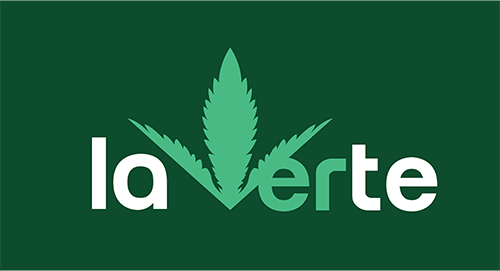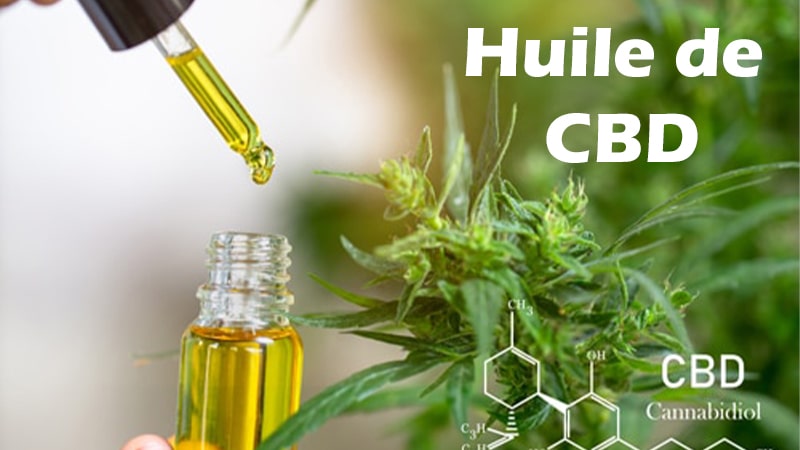Blog la Verte Shop
CBD oil : All about the different oils.
Depuis maintenant des mois, les produits à base de Cannabidiol (CBD) se développent à la vitesse grand V en France et partout en Europe. Vous pouvez trouver tout type de produits tel que les fleurs, les résines, des produits alimentaires et cosmétiques, mais aussi des huiles. Cependant, il existe plusieurs types d’huiles, et il peut être difficile de tout comprendre. Nous allons donc vous aider à y voir plus clair.
Qu’est-ce exactement que l’huile CBD ? Quelles sont les différences entre le chanvre et le cannabis ? D’où vient l’huile à l’origine? Nous allons tenter de répondre à toutes ces questions. En outre, les méthodes d’extraction pour obtenir de l’huile de CBD, l’utilisation des gouttes CBD seront également abordés. Par la même occasion, nous évoquerons les effets et possibles effets secondaires. Enfin pour terminer, nous présenterons brièvement les possibles applications des huiles de cannabis, ainsi que le dosage correct de ces produits à base de CBD.
Huile de CBD : Qu’est ce que c’est, et d’où vient-elle ?
Le CBD ou cannabidiol est l’un des cannabinoïdes présents dans la plante de cannabis, parmi plus d’une centaine. Celui-ci connaît une croissance de popularité exponentielle depuis quelques années. Les utilisateurs sont divers et variés : les mères de famille, vos grands-parents, les hipsters comme les hippies, etc… L’huile de CBD est à ce moment en train de devenir le remède de prédilection des propriétaires d’animaux. Ces derniers souhaitent garantir à leurs fidèles compagnons une vie sans anxiété et sans douleur.
Qu’est ce que l’huile de cannabis ?
L’huile de cannabis s’obtient à partir de plantes de chanvre spécialement cultivées pour leur haute teneur en CBD. Parmi celles-ci, la Cannabis Sativa L, une plante à très faible teneur en THC. Par conséquent, l’extraction de l’huile ne provoque aucune intoxication ou effet psychotrope. La teneur en CBD de l’huile de cannabis peut cependant varier d’un produit à l’autre. Il y a plusieurs manières de la consommer: vaporiser l’huile et donc d’absorber les ingrédients actifs par les voies respiratoires, ajouter l’huile à la nourriture ou encore la prendre par voie orale. La façon de consommer l’huile de cannabis dépendra donc entièrement de vos préférences. L’huile de cannabis est souvent associée à divers effets positifs sur le bien-être psychique et physique de l’humain. Cependant, aucune études officielle n’a encore été présentée sur ce sujet, et nous vous recommandons bien sûr de contacter votre médecin avant de prendre des huiles ou autres produits CBD.
Comment obtenir l’huile de CBD par extraction ?
Comme pour par exemple les huiles d’arachide, il existe différents types: extraite à chaud ou pressée à froid, raffinée ou non, etc… C’est le même principe qui s’applique pour les CBD oils. Tout commence par l’extraction de l’huile, et pour ce faire, il y a 2 types d’extraction:
- Extraction with CO2: Lors de ce processus, la biomasse (la matière de la plante) est filtrée à travers une suite de chambres pour isoler les différents cannabinoïdes et terpènes à différentes températures (toutes celle ci contrôlées en se servant de CO2, d’où le nom de cette méthode). Ils sont ensuite littéralement pressés hors de la plante avec une forte pression. C’est, à ce jour, la méthode d’extraction la plus utilisée car elle permet d’isoler et de supprimer des composants indésirables dans la plante sans laisser de résidu.
- Solvent extraction: Ce procédé est clairement moins couteux que le précédent,. Il consiste à injecter un solvant (ethanol la plupart du temps) dans la plante de chanvre. Ce dernier dissout les cannabinoïdes pour pouvoir les extraire de la plante. Le mélange est ensuite soumis à l’évaporation qui ne laisse que les composés de la plante.
La production de l’huile suite à l’extraction
Once the crude hemp oil is extracted, the product must be packaged for consumers. This is a winterisation and/or insulation process. The process used is determined by the type of final product desired.
- L’huile de CBD à spectre complet: L’hivernisation permet de retirer les cires et autres impuretés. Il reste alors de l’huile de CBD à large spectre ou à spectre complet. Celle-ci contient une vaste gamme d’acides de cannabinoïdes (précurseurs décarboxylés des cannabinoïdes) / de cannabinoïdes (acides de cannabinoïdes carboxylés) comme le THC et le Cannabidiol, les terpènes et les flavonoïdes.
- Cannabinoid isolates: the crude hemp oil is subjected to a process called centrifugal partition chromatography (CPC) in which all other components are removed, leaving pure Cannabidiol at about 99 % or other cannabinoid isolates.
Les effets et bienfaits de l’utilisation de l’huile de CBD
Nous rappelons que ce passage est à titre indicatif et informatif, et qu’en aucun cas, nous vous invitons à en consommer. Encore une fois, il est impératif que vous consultiez votre médecin avant de vouloir faire usage de ces produits.
The scientific community agrees that CBD has analgesic properties. It helps to reduce pain and inflammation by controlling and suppressing the α3-glycine receptors that cause the sensation of pain. CBD can also have an immunosuppressive effect, which helps reduce inflammation and pain.
It can also help treat certain cancers by killing certain cancer cells and reducing the size of tumors by regulating the expression of the Id-1 gene.
Concernant l’anxiété et la dépression, le CBD stimule le taux de sérotonine dans le cerveau, et les inhibiteurs sélectifs de la recapture de la sérotonine (SSRI). Il semble également stimuler la neurogénèse dans l’hippocampe, la partie du cerveau régulant les émotions et l’humeur. Ainsi, le CBD pourrait aider à calmer les anxiétés et le stress ainsi que rendre plus supportables les périodes dépressives. Dans le même sens, l’huile de CBD pourra vous aider à lutter contre les insomnies et vous faire mieux dormir.
How many drops and how to consume them?
Bien que nous n’ayons pas encore de données claires et sûres sur le dosage de l’huile, le corps médical, les utilisateurs confirmés et l’expérience empirique semblent indiquer qu’il est préférable de « commencer avec peu et progresser lentement ». Cela signifie généralement commencer avec 25 mg de CBD deux fois par jour, puis augmenter progressivement cette dose en ajoutant 25 mg toutes les 3 à 4 semaines jusqu’à l’obtention des effets attendus.
Y-a t’il des effets secondaires ?
Etant un produit considéré comme non stupéfiant, il n’y a aucune preuve ce nocivité constatée sur le corps humain. Cependant, les utilisateurs peuvent réagir différemment aux effets du CBD. Certains des effets secondaires connus peuvent être: la bouche asséchée, une légère somnolence, des vertiges et étourdissements, et des diarrhées. Il est donc important d’en parler à un médecin avant d’en utiliser.

